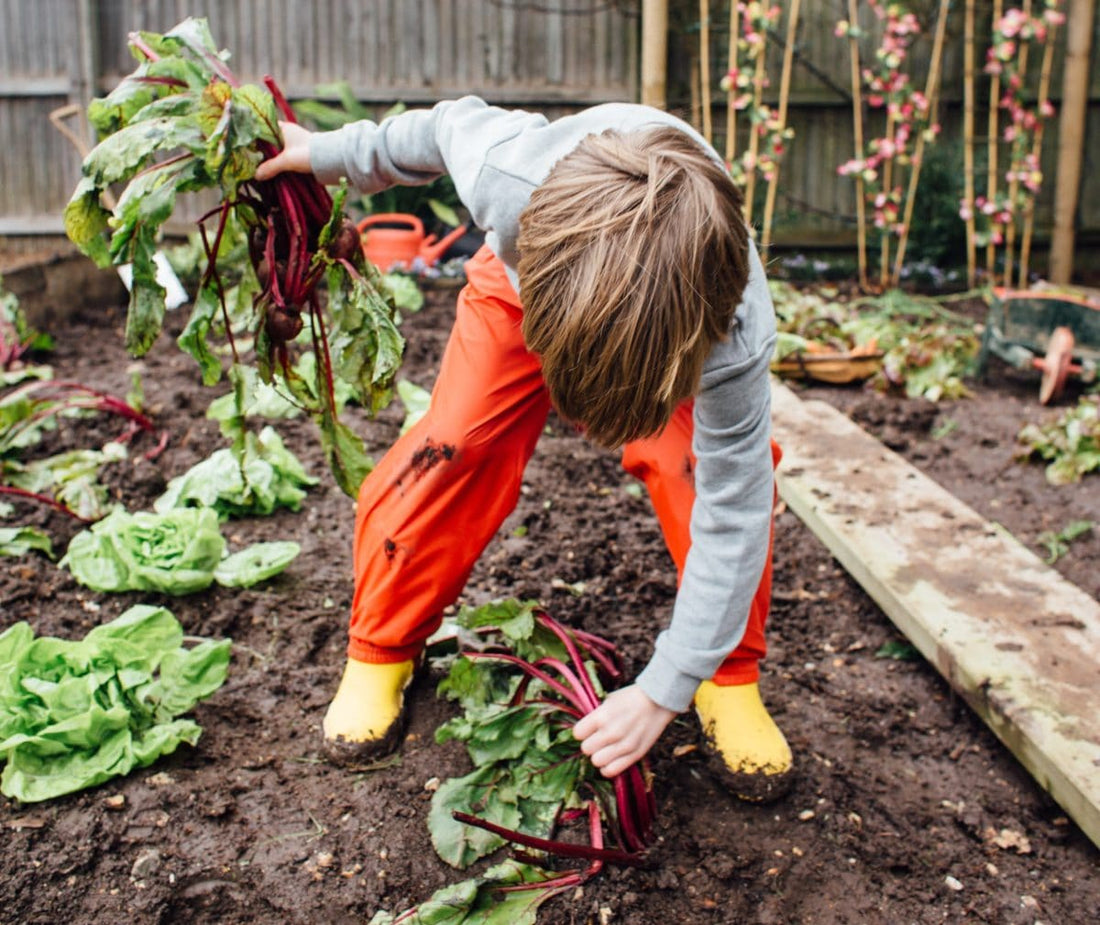
Kids Nutrition with Emma Elia-Shaul
We caught up with Emma Elia-Shaul, the founder of Love, Bite, Eat and asked her to share some nutrition tips for children with our readers.
We all have busy schedules and it's not easy to prepare wholesome, homemade meals on a daily basis, but we hope that these amazing tips will help you and your little ones develop healthy eating habits without feeling deprived. Emma said: "Each mouthful should be a pleasure, and each meal should make us smile with deep down delight and gratification" and we couldn't agree more!1) How do I get my child to eat vegetables?
Sadly, this is an all too common concern, with so many parents struggling to feed their kids a balanced meal which includes more than just carbohydrate. Even if your child loves fruit, vegetables are still a crucial part of their daily diet. Ideally, vegetables should make up over half of our meal, with the rest made up of protein and healthy fats. However, for the majority of children, this isn’t the case, meaning they can be lacking in important nutrients and dietary fibre. Unfortunately, sugary drinks and snacks can mean that a child’s delicate palate can no longer enjoy the simple taste of vegetables. Even so-called ‘organic’ or ‘healthy’ children’s snacks often contain hidden sugars which can be detrimental to ensuring children enjoy more of a variety of foods. Certainly, eating as a family, and making sure your child sees you eating and enjoying an array of delicious vegetables, is an important first step in trying to solve this problem. Some basic tips also include keeping snacks well away from mealtimes, so that your child comes to the table with a healthy appetite. Before serving the main meal, try quietly placing on the table, or near your children, a plate of brightly coloured lightly steamed vegetables, or crudites such as carrot, celery or cucumber sticks, sliced red pepper, sliced mushrooms and cherry tomatoes. If they’re hungry, and without the pressure of being told ‘eat your veg’, children may find themselves picking at these whilst playing, reading or watching T.V., without even realising they’re eating. Adding a good portion of vegetables to soups, stews and casseroles can be a brilliant way to ensure a balanced meal. Save the liquid left over from steamed vegetables to make a great stock. Of-course you can adapt favourite recipes. Why not try using celeriac mash in fish pie or shepherd’s pie, for example. Bolognaise sauce is great with lots of grated carrot and courgettes, as well as sliced mushrooms and red pepper. Or blend a quick, easy pesto with kale or broccoli. You could even try eating it on spiralised butternut squash or courgetti spaghetti. Of course, getting your kids to help prepare balanced, vegetable-based meals, can be a fun way to let them feel they have control over what they eat, and a great way to teach healthy eating from an early age.
2) How do I get my child to eat less sugar?
Sugar is detrimental to our overall health, making it more difficult for our bodies to fight off infection, and with childhood obesity on the rise, we’re all aware of the dangers of sugary foods and drink. Processed and pre-packaged foods often contain added sugar and avoiding these foods is highly advisable. Try substituting sugar in home-made cakes and biscuits, with natural fruit sugars such as date syrup. Xylitol is a great sugar alternative. Widely available in most health food shops and supermarkets, it looks and behaves exactly like sugar but has fewer calories, doesn’t raise blood sugar levels and is actively good for the teeth. Xylitol is great in baking, ice cream and most desserts.3) Is brown rice better than white rice?
Although rice is a great gluten-free alternative to wheat-based breads and pasta, because it is grown under flooded conditions it naturally contains more arsenic than other cereal crops. Brown rice is higher in fibre, vitamins and minerals, but also contains more arsenic than white rice, with white Basmati rice containing the least. Fortunately we can get rid of the arsenic in rice by rinsing it well (until the water runs clear), then soaking it in a large bowl of fresh water overnight. To prepare, drain, rinse well and cook in 5 parts water for 10-12 minutes or until done, then drain and enjoy.4) Is organic food really better?
Organic fruit, vegetables and cereals are better for us as they are not sprayed with pesticides, so don’t contain the harmful toxins found in non-organic foods, and are higher in anti-oxidants. It is very important that the meat and poultry you prepare for your family is organic and free range and is naturally grass fed and slow-reared. Speak to your butcher to find out where your meat is coming from, or source fantastic organic meat and poultry at local farmer’s markets. Organic food is not only healthier, it ensures higher standards of animal welfare, is kinder to the environment, and tastes so much better.5) Are eggs good for kids?
In the past, eggs have had a bad press as they contain cholesterol, which has been linked to heart disease. However, we now know that the cholesterol in eggs does not affect cholesterol levels in the blood in a way that is harmful. In fact eggs are incredibly good for us. Not only are they an excellent source of protein, they contain anti-oxidants, and are rich in iron and important vitamins. Eggs are also incredibly versatile, and can be used in so many delicious recipes from pancakes to frittatas. They are also fantastically quick and easy to prepare. Delicious simply boiled, scrambled or poached, eaten first thing, they’ll easily keep us going until lunchtime, making an ideal breakfast for our little ones.

